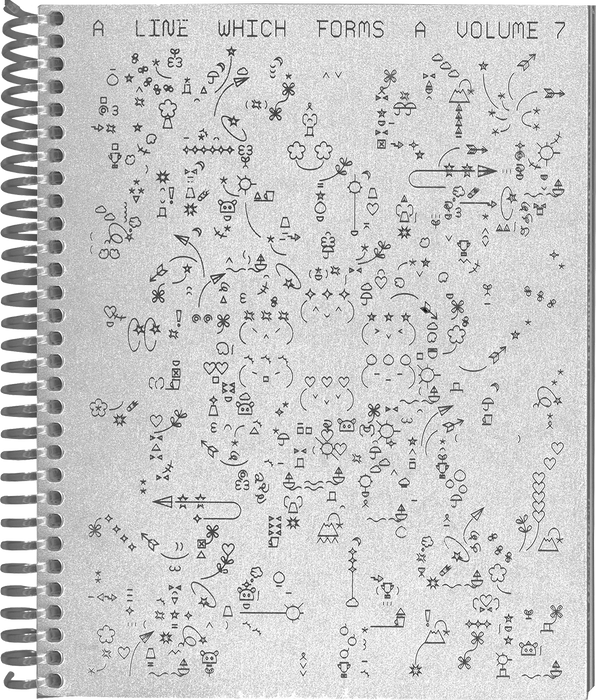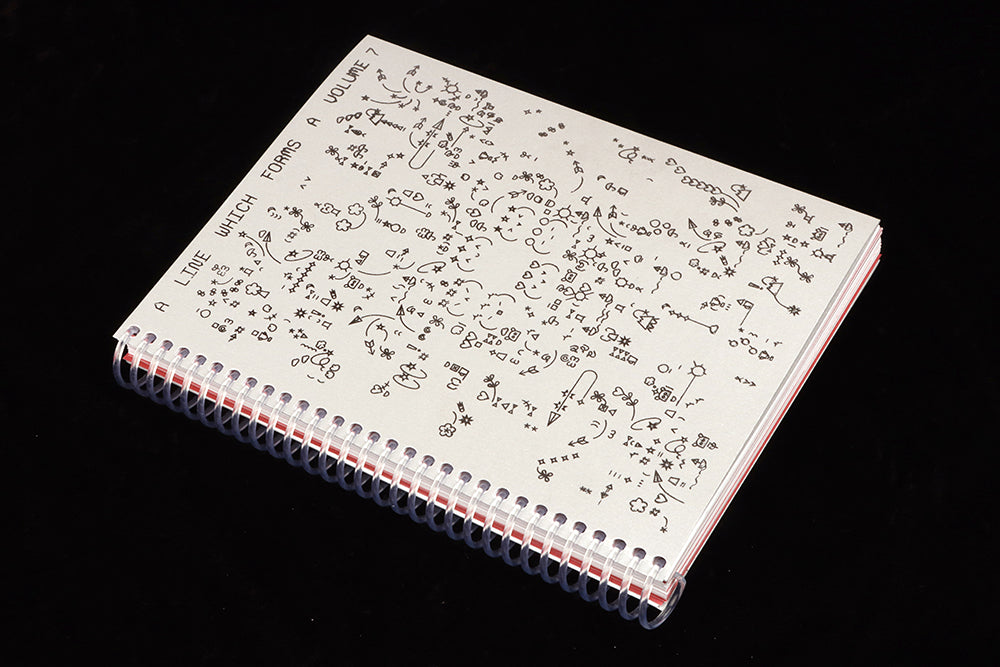

A Line Which Forms A Volume #7
There are many roles for an independent magazine today, and that of distribution channel for student design research promises something special.
Our latest Magazine of the Month, A Line Which Forms a Volume, produced annually by the students of London College of Communication’s MA Graphic Design course, delivers on that promise. The curriculum uses design to explore the complexities of contemporary society, and each issue of the publication brings together a series of student contributions on a theme—a combination of new writing and briefer reflections on student work.

We’ve supported the magazine since launch, and seen it develop into something very special. The way it uses a themed symposium to tease out content that the students can first research and then design is an ideal model for academic publishing, mimicing ‘real’ magazine production. Too often the link between content and presentation, the key to a successful magazine, is never established, and instead a functional but dull design carries the research.
It’s to A Line Which Forms a Volume’s credit that its ever-changing writers and designers—supported by a teaching team including Paul Bailey, Tony Credland and Bryony Quinn—have consistently made the most of the desired connection between content and its design. The result is a genuine piece of editorial design, both in terms of graphic layout and physical object. Design details on the page and the pages’ size and format often change issue to issue, but you can always sense the back and forth between writing and designing.

This seventh issue addresses the role of emotions in design research. It opens with an interview with writer/designer Charlie Thomas, about their new book about the heart symbol and its use and meaning in social media (above, note the different ink colours delineating student/exterior content). This tech vs emotion theme resurfaces throughout the issue: the slow flower movement presents an alternative to the industrialisation of seasonal flowers and a perhaps more appropriate relationship with these symbols of emotion; a reminder that the sharing of highly personal problems and emotions via social platforms can be as empowering as it can be coercive.

Elsewhere, there’s the result of an ‘Objects of Emotion’ workshop, to which the ALTFAV team each brought objects that held emotional value—postitive or negative—and discuss those feelings (above). This fascination with the meaning of objects is a very current theme, and is part of the increasing appreciation of the magazine as physical thing. This is emphasised by the use of physical versions of the magazine graphics in the accompanying photographs (below).


This issue follows the same format as the sixth one, a small, squarish page with spiral binding. The front and back covers use a textured silver-finish card with silver foil additions that is immediately visually effective and engaging (and aided by the transparent plastic binding). The intricate foiling shows a graphic collage of emoticon elements, built from two taxonomies of emoticons presented on the inside of the the fold-out cover sections—inside the front cover are the positive emotions (above), and inside the back are the negative ones (below). We’re also reminded that the term ‘emoticon’ is a contraction of ‘emotion icon.’

Too often such platform magazines—publications providing an outlet for indivduals to express themselves as a group—end up looking just like what they are, a disparate series of thoughts and opinions. A Line Which Forms A Volume avoids that fate through proper editing of text and image to create an editorial experience that lives up to the promise of its editors (for this issue), ‘The authors, supported by the editors, highlight the emotions coded within the texts. Meanwhile the designers act as communicators, using visual cues to signal these emotions to the readers…’
So often design research remains in it’s own small bubble, it’s great to see a project using a magazine to reach beyond that bubble.
Editors Chegbo Yao and Yang Sun
Graphic designers Cheng Chang, Sea Ho, Yankai Pei and Pauline Hill
Buy your copy from the magCulture Shop



